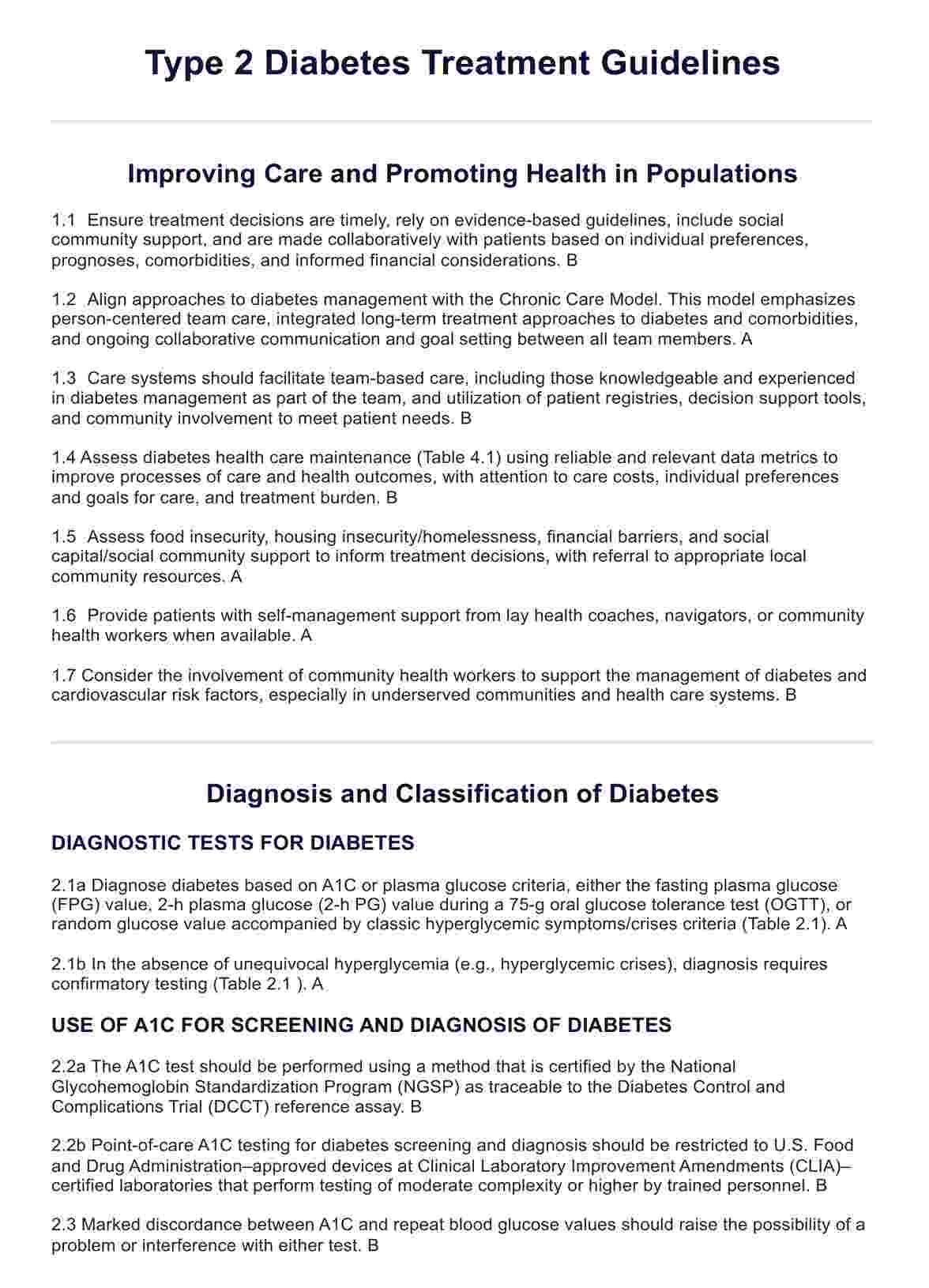The standard treatment protocol for type 2 diabetes includes lifestyle modifications such as diet and exercise, along with oral medications or injectable therapies like insulin to control blood glucose levels.

Type 2 Diabetes Treatment Guidelines
Get comprehensive guidelines and examples for treating Type 2 Diabetes in Carepatron's free PDF download.
Use Template
Type 2 Diabetes Treatment Guidelines Template
Commonly asked questions
Five main treatment options for type 2 diabetes include metformin, sulfonylureas, DPP-4 inhibitors, GLP-1 receptor agonists, and SGLT2 inhibitors, which can be used alone or in combination to lower blood glucose levels.
The advised treatment for type 2 diabetes includes a combination of lifestyle modifications, such as diet and exercise, along with medication management tailored to the individual patient's needs and preferences.
EHR and practice management software
Get started for free
*No credit card required
Free
$0/usd
Unlimited clients
Telehealth
1GB of storage
Client portal text
Automated billing and online payments











